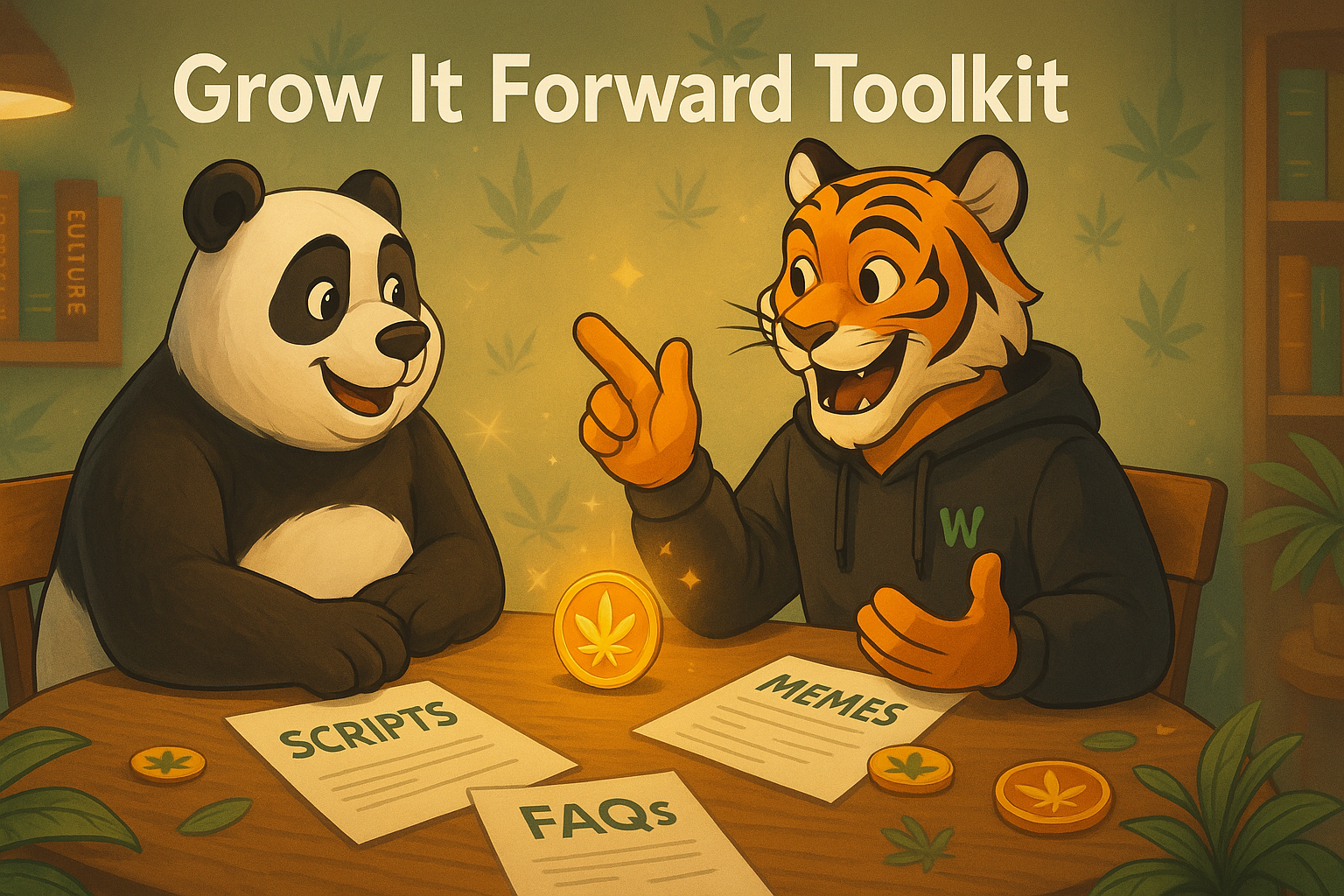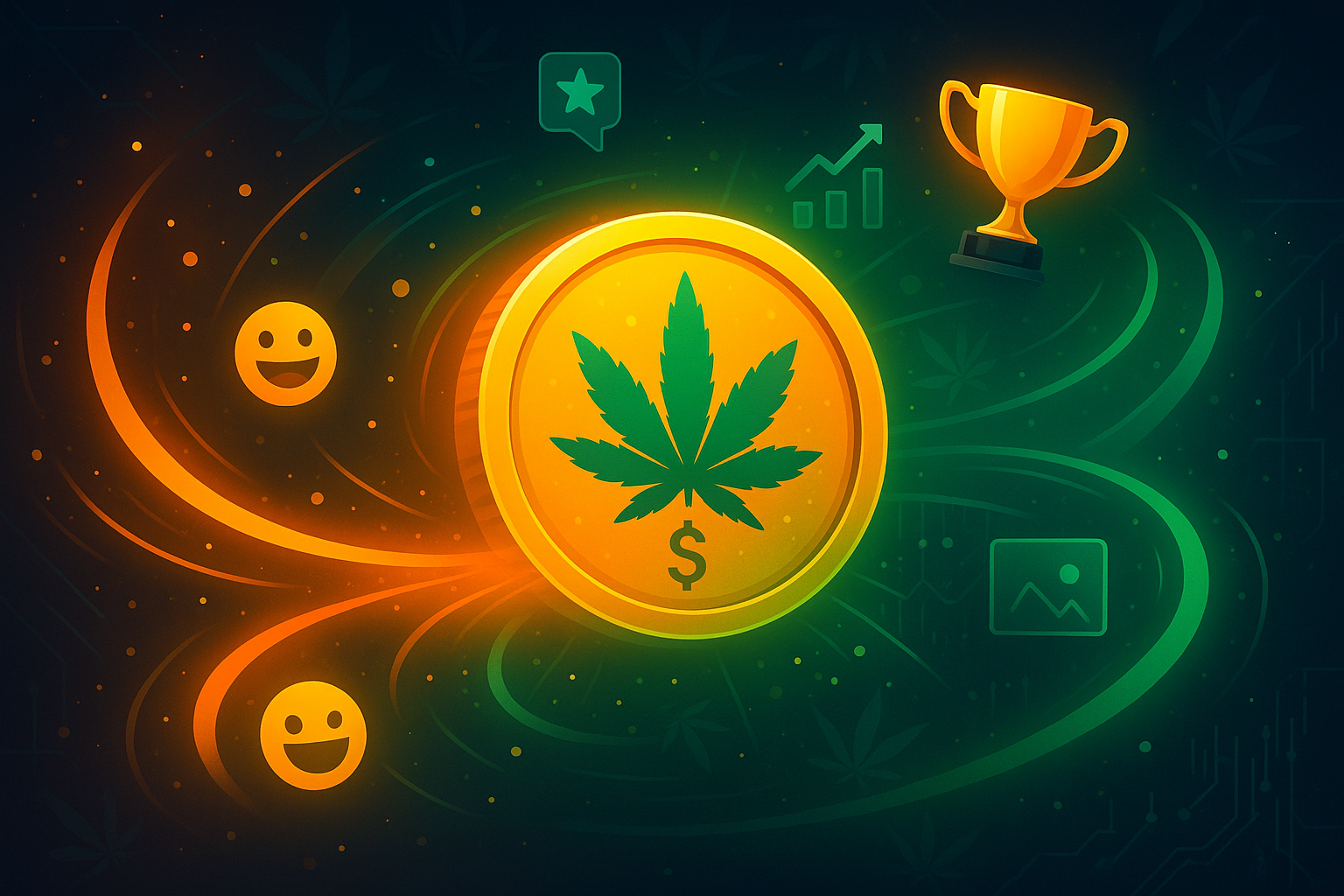Factors Increasing Risk with Medical Marijuana
Who’s Most Vulnerable and Why
The risks of medical marijuana can vary widely depending on individual factors, making some patients more vulnerable to adverse effects than others. At Weedcoin, we’re here to help you understand these factors through the MediWeed Hub with irie vibes. In this article, we’ll explore the key factors that increase the risk of side effects, from tolerance levels to underlying health conditions. Whether you’re using a strain like Weedcoin OG or starting your cannabis journey, knowing your risk factors can help you use marijuana safely—let’s dive into what makes some patients more vulnerable!

Several factors influence the likelihood and severity of side effects from medical marijuana, including tolerance, age, health conditions, and usage patterns. We’ll examine these factors in detail.
Low Tolerance and New Users
Patients with low tolerance—such as new users or those who use cannabis infrequently—are more prone to side effects, particularly from THC. A new user taking 5 mg THC might experience anxiety, dizziness, or paranoia, while a regular user might tolerate 15 mg without issue. This is because the endocannabinoid system needs time to adapt to THC—CB1 receptors can become overstimulated in novice users, leading to exaggerated effects. For example, a first-time patient trying Weedcoin OG (potentially 22% THC) at 10 mg might feel overwhelmed, while a seasoned user would find the same dose relaxing. Starting with a low dose (e.g., 1–2.5 mg THC) and gradually increasing helps mitigate this risk.
Age and Developmental Stage
Age significantly impacts risk, with adolescents and older adults being more vulnerable. Adolescents (under 18) face a higher risk of cognitive effects—Early use can impair memory and IQ, with effects persisting into adulthood. A 16-year-old using 10 mg THC daily for anxiety might struggle with school performance due to memory deficits. Older adults (65+) are more susceptible to cardiovascular effects—THC’s ability to increase heart rate (20–50 beats per minute) and lower blood pressure can lead to dizziness or fainting, especially in those with heart disease. A 70-year-old patient using 10 mg THC for insomnia might experience a drop in blood pressure, increasing fall risk. Age also affects metabolism—older adults may process THC more slowly, prolonging side effects.
Pre-Existing Health Conditions
Certain health conditions increase the risk of adverse effects. Patients with a family history of schizophrenia or bipolar disorder are more prone to cannabis-induced psychosis—High THC doses (e.g., 20 mg) can trigger hallucinations in these individuals. Those with cardiovascular conditions, such as hypertension or arrhythmias, face heightened risks from THC’s effects on heart rate and blood pressure—a patient with heart disease using 15 mg THC might experience chest pain or palpitations. Patients with liver or kidney disease may metabolize THC and CBD more slowly, increasing the risk of side effects like drowsiness or nausea. Mental health conditions like anxiety or depression can also be exacerbated by high THC doses, though low doses may be beneficial.
Usage Patterns and Frequency
The frequency and quantity of cannabis use directly impact risk. Daily users are more likely to develop tolerance, dependency, and CHS. 1 in 10 users become dependent, rising to 1 in 6 if use starts before 18. A patient using 1 gram of cannabis daily for years might develop CHS, experiencing severe vomiting after a decade of use. High doses (e.g., 20 mg THC) increase the likelihood of side effects like anxiety or psychosis, especially in strains with 20%+ THC. Binge use—consuming large amounts in a single session—also heightens risks, as does combining cannabis with alcohol or other drugs, which can amplify sedation and impair coordination.
Method of Consumption
The method of consumption influences risk levels. Inhalation (smoking or vaping) delivers THC rapidly, increasing the chance of acute side effects like anxiety or dizziness—patients might feel overwhelmed if they inhale 10 mg THC too quickly. Edibles pose a risk of overconsumption due to delayed onset (30–60 minutes)—a patient taking 20 mg THC in an edible might redose too soon, leading to intense effects. Tinctures and topicals are generally safer, with more predictable dosing, but improper use (e.g., taking too much tincture) can still cause issues. Smoking also carries long-term respiratory risks, which are exacerbated in patients with asthma or chronic obstructive pulmonary disease (COPD).
Genetic and Lifestyle Factors
Genetic predispositions and lifestyle factors also play a role. Patients with a genetic predisposition to mental health disorders are at higher risk for psychosis or anxiety. Metabolism varies genetically—some individuals break down THC faster, reducing side effects, while slow metabolizers may experience prolonged effects. Lifestyle factors like stress, dehydration, or poor diet can amplify side effects—a dehydrated patient might experience worse dry mouth or dizziness, while high stress levels can exacerbate THC-induced anxiety. For example, a stressed patient using 10 mg THC from Weedcoin OG might feel more anxious than a relaxed user.
Practical Tips:
- If you’re a new user, start with 1–2.5 mg THC and increase gradually to build tolerance safely.
- Older adults should monitor blood pressure and heart rate after use—consult a doctor if you have heart conditions.
- Avoid high-THC strains if you have a family history of mental health disorders—opt for balanced or CBD-heavy options.
- Limit frequency to 2–3 times per week to reduce dependency risk, and take breaks to prevent tolerance buildup.
- Stay hydrated and manage stress through relaxation techniques to minimize side effects like anxiety or dry mouth.
Key Takeaways:
- New users and those with low tolerance are more prone to THC-related side effects like anxiety or dizziness.
- Adolescents risk cognitive impairments, while older adults face cardiovascular risks from THC.
- Pre-existing conditions like schizophrenia or heart disease increase the risk of severe reactions like psychosis or arrhythmias.
- Daily use and high doses (e.g., 20 mg THC) heighten dependency and CHS risks, especially with frequent consumption.
- Genetic predispositions and lifestyle factors like stress or dehydration can amplify side effects, varying by individual.













